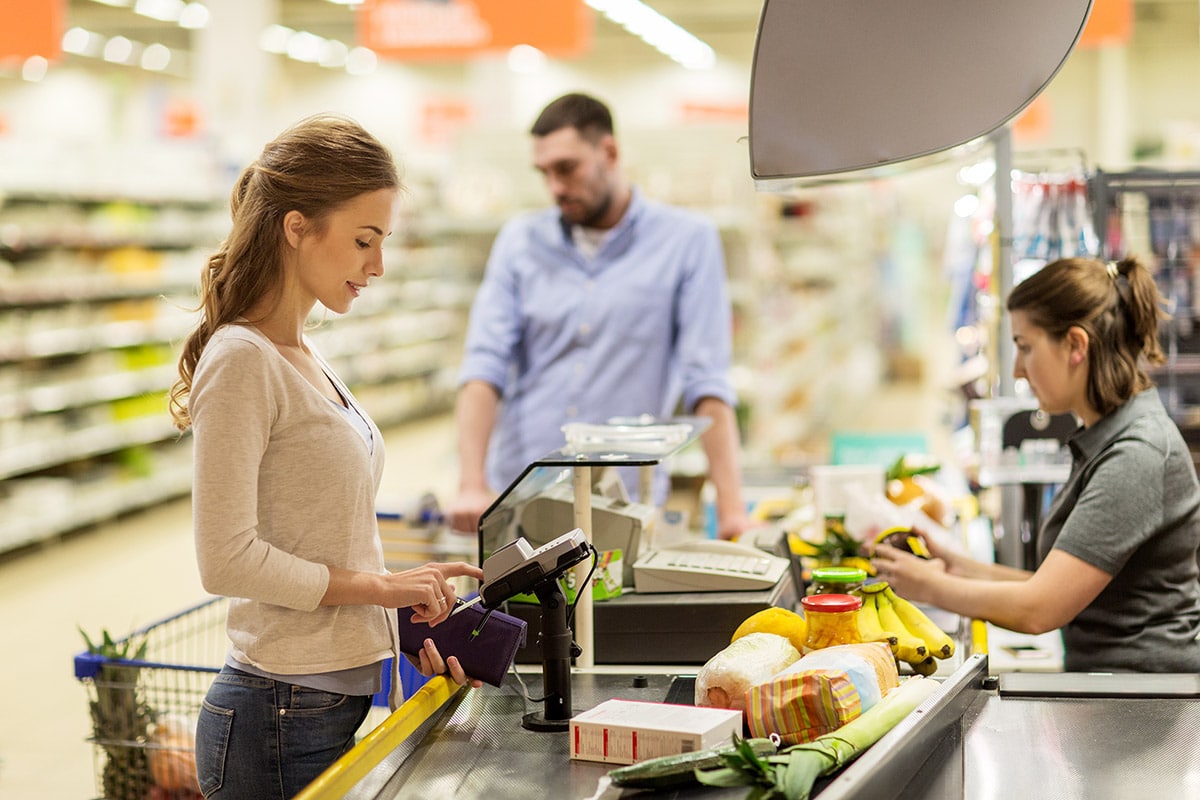How technological advances in retail are shaping the future of shopping
Third-party developers play a vital role in this retail technology, as brands often don’t have the resources to develop high-tech programs in-house. By working with outside developers, brands can bring new services to shoppers which enhance their experiences. They can offer in-the-moment advertising to drive sales while streamlining campaigns to target the right individuals. These cost-effective initiatives are changing the way customers shop while helping brands forge better connections.
Offering New Features With Third-Party Partnerships
Many traditional brick-and-mortar retailers added services like curbside pickup and delivery to their offerings in recent years. Such services were made possible via partnerships with companies like Uber, Postmates, and InstaCart. By 2021, online grocery purchases will account for $30 billion in sales, and these third-party services are the primary drivers. They allow brands to quickly roll out delivery programs with little runway or upfront investment.
Creating a Welcoming Atmosphere With Virtual Greeters
Virtual greeters allow retailers and brands to welcome consumers to a location and share information about deals. These short, app-enabled messages replace the traditional door greeter while offering more thorough information than a human sales assistant could.
Virtual greetings work through beacon technology and GPS. When customers reach within a specific range, retailers can direct a message to play for anyone who uses the app. That message could include a video greeting from a spokesperson, an announcement of current events, or even rewards points for store entry. The message creates a positive experience that sets the tone for the consumer’s trip and puts them in a favorable purchase mindset.
Improving Sales With Personalized In-Store Ads
Advertising in the shopping aisle is traditionally mass market. All consumers see the same displays, end caps, and offers. In recent years, retailers have used technology to innovate many in-store advertising methods and provide personalized greetings.
Digital end cap offers:
End caps are highly desirable sales locations in the store, and competition among brands is fierce. Digital end caps provide a more flexible solution for retailers. Kroger recently implemented a test program around this using their app and its users. The company, with the assistance of Microsoft, installed end cap cameras capable of recognizing the age and gender of individuals. It would then deliver a preloaded, targeted offer based on those specifics. The display was even capable of greeting the individual by name using their membership details.
Shopping apps:
Shopping apps help brands connect with consumers in the shopping aisle. Shopkick, for example, offers a digital scavenger hunt that incentivizes consumers to seek out products by rewarding them for certain purchase behaviors. This technology offers brands an innovative way to help their products stand out, even when in-store shelf space is less than optimal.
Omnichannel events:
Many brands are tying the digital and physical experiences together to promote new products. A recent example occurred with a cross-promotion between Disney and Levi’s. Levi’s offered consumers a unique Snapchat-enabled augmented reality experience at an Orlando store. Visitors received a temporary offer along with an exclusive Snapchat filter when they visited the location, and were able to purchase a Disney branded cap using the app. The campaign was a major success because it leveraged scarcity and exclusivity. This strategy is ideal for a new product launch marketing plan as it creates a scalable event based on a specific location.
Lowering Overhead With Cashier-Less Grocery Shopping
Retailers often look to technology to solve staffing woes. By automating certain in-store tasks, like checking out, brands streamline shopping and reduce workloads. Self-checkout kiosks set the stage for a far more high-tech future, where consumers can complete their shopping trip without the need to check out at all.
Image Recognition Guides Consumers to Products and Unlocks Features
Image recognition is gaining a lot of attention for its potential in retail. Growth in AI allows developers to categorize millions of images along with their meanings. Machine learning teaches these systems to recognize critical components and match those features to existing data. There are two primary developments for retail image recognition of which brands should be aware.
2D in label recognition:
2D image recognition turns the labels of products into their UPCs. This process is useful in both managing supply and delivering customer experiences. Consumers could, for example, scan a product’s label with their smartphone to unlock features like product information, deals, and rewards points. It also allows brands to monitor stock on the shelves and reorder products proactively.
3D in reading consumer behavior:
The application of 3D image recognition is a bit more controversial, as it leverages technology to read a consumer’s facial expressions and make a determination about their overall satisfaction. It can also enhance rewards programs by using stored facial data to recognize consumers quickly and greet them by name.
The Growing Impact of Voice in Online Shopping
The ever-increasing popularity of the smart speaker has expanded the use of voice search and by extension, voice ordering. Voice technology presents a new opportunity for CPG brands to reach consumers by leveraging their brand’s reviews and existing reputation. This opportunity lies in how voice search indexing will differ from that of its text-based counterpart.
Enhancing Chatbots With AI for Delivering Top Tier Customer Service
Chatbots are certainly nothing new in customer service, but they are much smarter than they used to be. About one-quarter of all organizations will use the services of these chatbots by 2020, and it’s very likely consumers won’t even notice that they’re communicating with a computer.
Preparing for Technological Advances in Retail
Brands that wish to leverage the newest technological advances in retail must carefully evaluate the cost. Third-party partnerships allow them to enjoy the benefits of these programs without the high upfront cost of developing features in-house. However, brands must thoroughly vet these partnerships, as working with less reputable third-parties can damage the customer relationship.



